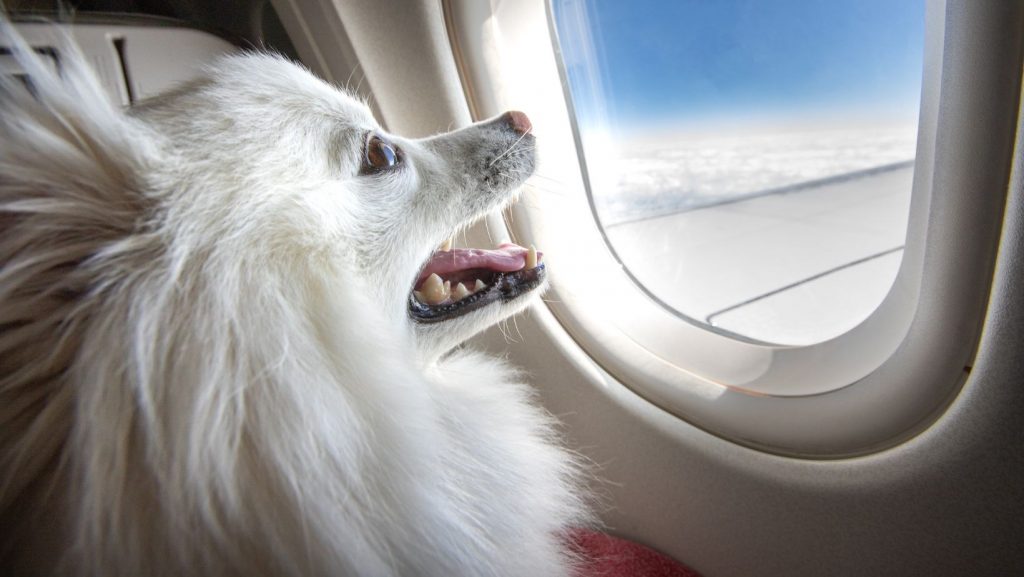Flying Internationally With Your Dog

Certain dogs can be superb travel buddies abroad, while other breeds cope better with a pet minder or kennel. Mercifully, most dogs should be able to travel just fine, and after adjusting to their new surroundings and resting after the travel, they should be happy settling in wherever they are. After all, you are their whole world, so if you are happy, they are happy.
But there are a few considerations, and you will have to do a lot of research and planning if you have not travelled with an animal in your life. For example, it is logical that older pets or pets with health conditions might not be able to travel safely.
Firstly, some countries have “banned breeds.” They do not allow for short visits or relocating because of safety concerns. Most countries do not allow pets to travel from areas with a higher incidence of rabies (think Covid with humans). Even if this sounds unfair, there is little room for negotiation on these rules.
The good news is that with a bit of pre-planning, most of the time, dogs are welcome to experience the new adventure with you.
Is International Travel Safe for Dogs?
Aside from some understandable stress caused by unknown people, places, and machines, most dogs travel comfortably and safely. Quality time with their favourite human and some grass or sand under their paws will perk them up very quickly. Ensuring safety for your pup and your travellers means you must plan and make contingency plans to circumvent hazards and the inevitable travel delays that come with international travel.
Before anything is planned, you need to consult your vet to make sure there are no health reasons your pup should not travel because air pressure, extended flight times, and extreme temperatures that your pet is not used to might expose or exasperate existing conditions.
For example, breathing complications are the primary concern in snub-nosed breeds like bulldogs and pugs since their respiration is not as efficient as other breeds, even if they are entirely healthy. For this reason, some airlines will not accept these breeds for cargo travel. Many airlines also have specific restrictions on pet travel during hot weather. Even without restriction, you must remember that it might be best to travel late at night or early in the morning when temperatures are generally cooler.
A BIG decision is deciding whether your pet will travel in the cabin or the cargo hold. Only small dogs are allowed in the cabin unless you are willing to buy an extra seat and always have your dog in a crate. Cargo travel is usually considered safer for dogs, but as a pet lover, the risks might be more than what you are willing to take because you won’t be able to see or monitor your dog during transit.
You might be concerned that the crate could be handled roughly, and your dog might be exposed to extreme temperatures during loading and unloading times. The plus side of cargo traveling is that the dark and quiet environment may help some pups relax and sleep once they are safely on board. Remember that your pup will need to be checked in early for cargo travel, and you will only be with them again after disembarking the luggage. The has been sorted so that you will be separated from each other for longer than just the length of the flight.
Is Flying Internationally Stressful for Dogs?
Unless your dog is a seasoned traveller, it will likely experience some stress during travel. This makes sense since pets in cargo don’t understand what’s happening, for example, being separated from you, feeling pressure changes or turbulence during the plane ride, etc., but the stress is usually short-term. Most dogs resume their lives and quickly enjoy all their favourite activities after resting.
If your dog is very anxious in nature, the stress may be more of a concern. If you must travel with an anxious dog, please talk to your vet about other ways to lower their stress levels and prepare them for the trip.
Do Dogs Need to Be Quarantined During International Travel?
Quarantine sound very scary, and thankfully the majority of countries do not have quarantine laws if all travel requirements are met fully. Unfortunately, most rabies-free countries require a weekly quarantine period of six months.
Which Airlines Are the Most Pet-Friendly?
Google and social media would be good places to start researching because other travelling pet owners tend to praise or criticize airlines based on their individual experiences. One of the airlines frequently mentioned is Lufthansa, but the airline options will also depend on which airlines fly to your destination and their pet policies.
What are the Basic Requirements for Most Countries?
These guidelines on what is needed for your furry child to enter the destination country are primarily based on preventing risks to human health (such as diseases or animal aggression), and most laws are not negotiable.
Always ensure you get the latest requirements from a reputable source and meet them completely. If you do not comply with the guidelines set out by the specific country, your dog could be denied entry and sent back to your country of origin. Do your homework, and things should go smoothly and trouble-free.
Here are a few of the most basic requirements that would be a good start for any country (that allows dogs):
- A recent (not older than 10 days) international health certificate from a registered vet.
- Government export or release papers from the country you are traveling to.
- A microchip with the correct, up-to-date paperwork to ensure that the pet is brought in is the same as on the documents.
- Up-to-date vaccinations – rabies vaccinations are a universal requirement, and some countries might need proof of standard vaccination protocols being up to date.
- Blood titre tests (antibody test) – this would be a requirement for rabies-free countries to rule out possible infectious diseases.
- Parasite prevention – you might have to get topical and internal parasite treatments; administered and documented by a veterinarian in a given time frame before traveling.
Also, note that not all veterinarians can provide international health certificates, and paperwork will be examined to determine whether the vet is correctly accredited.
What Happens If a Pet Gets Sick While Traveling?
Never travel without having the details for veterinary practices at all your destinations because, in the case of an emergency, you do not want to waste any time getting your pup the best medical treatment possible.
In closing, always make sure you do your homework. Some countries, like rabies-free Hawaii, have a very long process that could drag on for months to allow pet entry, and countries might have different requirements for short-term travel as opposed to permanent relocation.
For permanent relocation, it might be wise to use a reputable pet relocation company well-known to the destination country to avoid months of red tape and quarantine for your fur child.
We all had to adapt and adhere to the strict protocols for international travel during the Covid pandemic – travelling with a dog is very similar as there are canine-associated risks that have to be addressed and procedures that have to be accepted if you and your fur buddy want to enjoy safe and secure travel.
